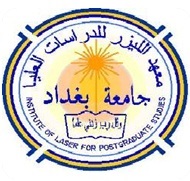- Laboratory name: Optical and Quantum Electronics Laboratory
Brief about the laboratory and its founding date:
The Optical and Quantum Electronics Laboratory was established in 2004 by the Quantum and Electronic Optics Group. This group is concerned with studying the applications of quantum optics in quantum cryptography and random number generation and its applications. These applications are important in achieving absolute confidentiality achieved by Heisenberg’s Inaccuracy Principle and the impossibility of quantitatively encrypted information. These theories are realized through the BB84 protocols, which depend on single photon generation, and the Eckert protocol, which depends on the generation of entangled photons.
The realization of these experiments generates the quantum key in an absolutely random and non-agreeable manner between the sender and the receiver, which provides absolute confidentiality in encrypting information. The group’s work extended towards designing integrated photonic circuits that enter into the construction of the transmitting and receiving circuits of these systems through photonics technology and two-dimensional materials.
The Vision: Building a world-renowned advanced laboratory in the applications of quantum optics in communications
The message: Building advanced scientific research through the projects of graduate students for the master’s and doctoral programs, in the field of electronic engineering and communications, in the applications of quantum optics in communications, and investing them in various fields in the relevant state departments, such as banks and other departments that need confidentiality in the exchange of information.
The Goals: To be able to build integrated quantitative coding systems and market them in the local market and neighboring countries.
2- Applied Photonics
An introduction to the laboratory and the date of its establishment:
Before 2007, and specifically since the beginnings of the establishment of the Laser Institute in the nineties of the last century, the laboratory’s research activity covered the applications of lasers in mechanical engineering and some experiments with laser-produced plasma. At that time it was the Nd: Glass laser manufactured at Korad, whose owner was Prof. Maiman, is the primary laser device in the laboratory. In the year 2007, research interests changed to focus on the applications of the newly discovered photonic crystal fiber in the various scientific and engineering disciplines of the Institute. Then, in line with the global scientific development in the field of photonics, the research lines focused on the research of fiber optic lasers and fiber optic sensors. The laboratory activity aims to conduct the research of graduate students (Masters and PhD), publishing in global containers, providing distinguished community service, and establishing a solid scientific and technological base for designing and building fiber-optic laser systems that cover all wavelengths from the visible region to the Near Infrared region, as well as their applications in various branches of science.
3- Spectroscopy Laboratory
This laboratory includes a set of spectral and optical devices for the preparation of materials and nano films to identify their composition and optical properties. The absorption and emission spectrums of various materials are studied, in addition to microscopic detection of different materials. This laboratory contains a set of equipment, including:
Spectrophotometer UV-VIS: This device is used to determine the absorbance and transmittance of liquid materials for wavelengths (200-1100 nm).
FTIR: This device is used to know the absorbance and transmittance of liquid, solid and gaseous materials at infrared wavelengths.
Raman Spectroscopy: Raman spectroscopy is used to provide a structural fingerprint with which molecules of a substance can be identified.
Microscope: This device is used to obtain the required sample magnification.

